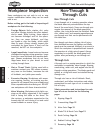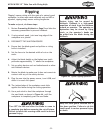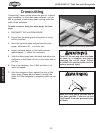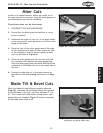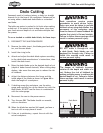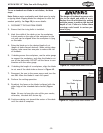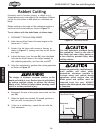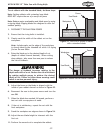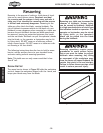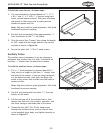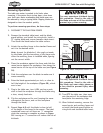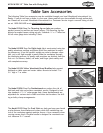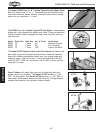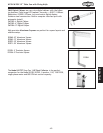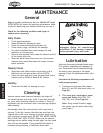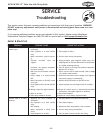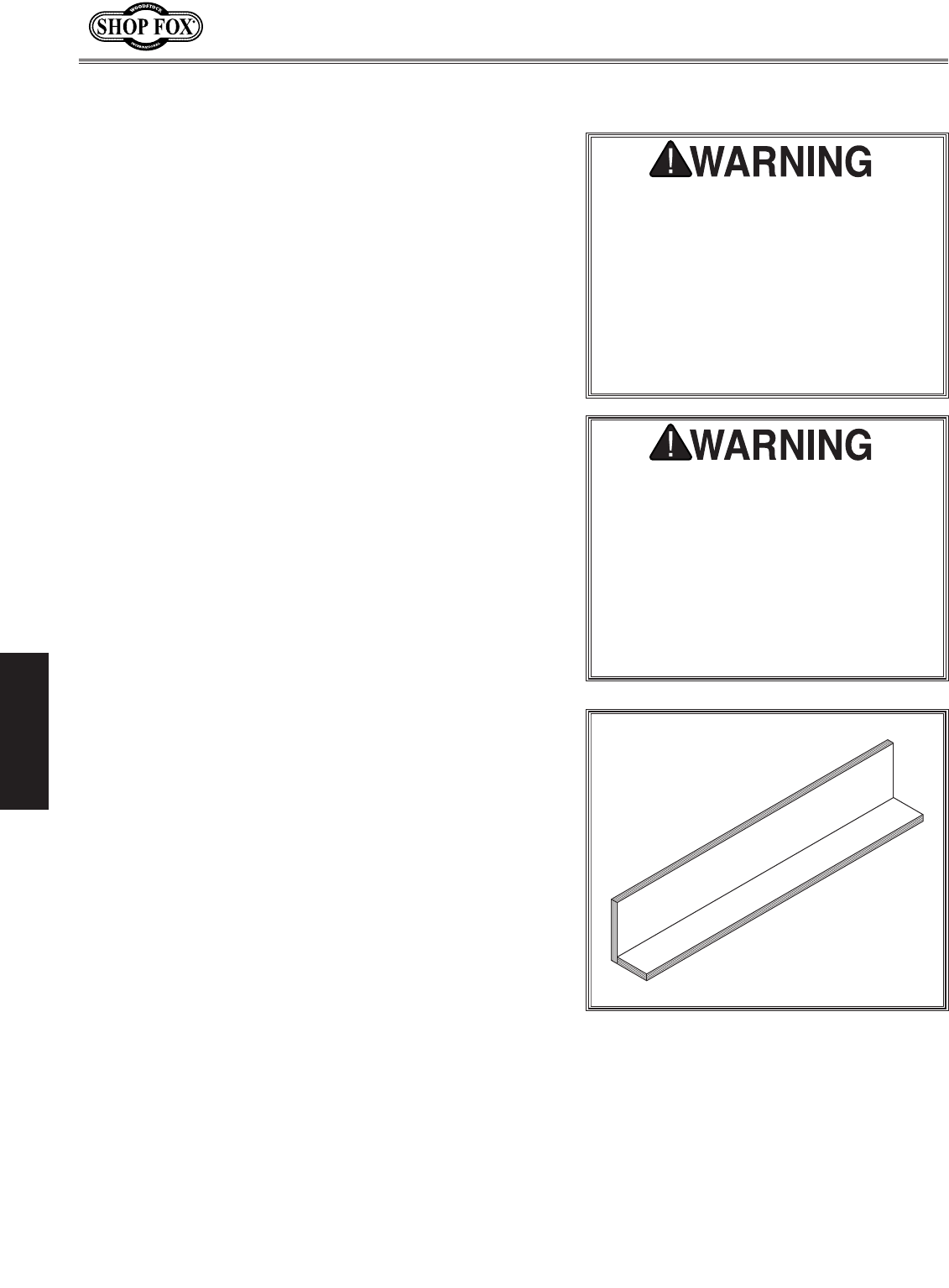
-38-
W1761/W1762 12" Table Saw with Riving Knife
OPERATIONS
Resawing
Resawing is the process of cutting a thick piece of stock
into one or more thinner pieces. Bandsaws are ideal
for resawing and the process is fairly easy and safe. A
table saw is not intended for resawing and the process
is difficult and extremely dangerous. Resawing on the
table saw often binds the blade, causing kickback. The
risk of kickback increases relative to the depth of a cut.
Kickback is more dangerous when resawing on a table saw
because the anti-kickback devices and blade guard must
be removed, leaving no protection between your hands
and the saw blade. Kickback can pull the operator's hands
into the blade, or the operator or bystanders may be hit
by flying stock. DO NOT resaw on a table saw without
using a resaw barrier. DO NOT resaw on a table saw with
-
out wearing a full face shield.
The following instructions describe how to build a resaw
barrier, add an auxiliary fence to your standard fence,
and more safely perform resawing operations.
Note: This table saw can only resaw wood that is less
than 8" tall.
Resaw Barrier
The resaw barrier shown in Figure 55 holds the workpiece
vertical, keeps the workpiece aligned with the fence, and
keeps your hands away from the blade.
Figure 55. Resawing barrier.
Resawing on a table saw increases the
chances of kickback. Serious injury
can be caused by kickback.
Kickback
is a high-speed expulsion of stock from
the tablesaw toward an operator. The
operator or bystanders may be struck
by flying stock, or the operator’s
hands can be pulled into the blade
during the kickback.
Resawing operations require proper
procedures to avoid serious injury.
Extra care must be taken to prevent
kickback when resawing. Any tilting
or movement of the workpiece away
from the fence will cause kickback. Be
certain that stock is flat and straight.
Failure to follow these warnings could
result in serious personal injury.



